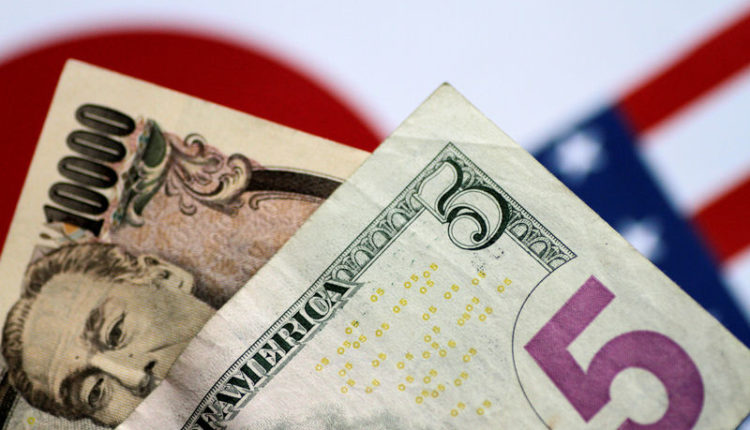Yen surges after Trump trade salvo wipes out dollar rally
By Stanley White
TOKYO (Reuters) – The Japanese yen hit a more-than-one month high against the dollar and multi-year peaks against antipodean currencies on Friday after U.S. President Donald Trump broke a truce in the Sino-U.S. trade war, bolstering demand for safe-havens.
Trump said he would impose an additional 10% tariff on $300 billion worth of Chinese imports on Sept. 1 after U.S. negotiators returned from trade talks in Shanghai, saying China had failed to buy large quantities of U.S. agricultural products as promised.
China’s offshore yuan slumped to the lowest in more than a year as Trump’s new levies would end a recent pause in a trade war that has forced Chinese policymakers to unleash stimulus to offset its slowing economy.
Trump’s surprise announcement sent shockwaves through global financial markets and wiped out the dollar’s recent rally against the yen, made after U.S. Federal Reserve Chairman Jerome Powell indicated the central bank was not entering a prolonged easing cycle.
An escalation in trade friction between the world’s two-largest economies threatens to bring further volatility to stocks and bond yields, which could weigh on the dollar and currencies from commodities exporters that trade with China.
“The yen could be bought further because of Trump’s move against China with tariffs,” said Junichi Ishikawa, senior foreign exchange strategist at IG Securities in Tokyo.
“It’s important to watch the dollar because its break above 109 yen was triggered by a rise in Treasury yields, but after Trump’s comments yields are going in reverse.”
Against the dollar, the yen was little changed at 107.490, just below 107.105, which was the highest since June 26. On Thursday, the dollar slumped 1.3% against the yen, its biggest daily decline since May 2017. The yen was also poised to rise versus the South Korean won.
The offshore yuan was trading at 6.9670 per dollar after falling to the weakest since November 2018.
The dollar index (DXY) was steady in Asia at 96.768 after falling 0.15% on Thursday, its biggest daily decline in two weeks.
Graphic: World FX rates in 2019 – http://tmsnrt.rs/2egbfVh
The benchmark 10-year U.S. Treasury yield (US10YT=RR) dropped to 1.878%, its lowest since November 2016 and the first time it has fallen below the technically significant 2% level in more than two years.
Traders will focus on how Chinese financial markets react to Trump’s latest salvo, but there are concerns that so-called risk-off trades will weigh on commodity currencies and those of smaller economies that rely on trade with China.
Against the Australian dollar, the yen (AUDJPY=) rose to 72.87, the highest since October 2011, before trading at 73.10.
Versus the New Zealand dollar, the yen (NZDJPY=) hit 70.26, the highest since June 2016.
Bids for the yen against the South Korean won (JPYKRW=R) were at the highest level since November 2016. Traders often sell the won when U.S.-China trade tensions intensify, given South Korea’s close economic ties with China.

